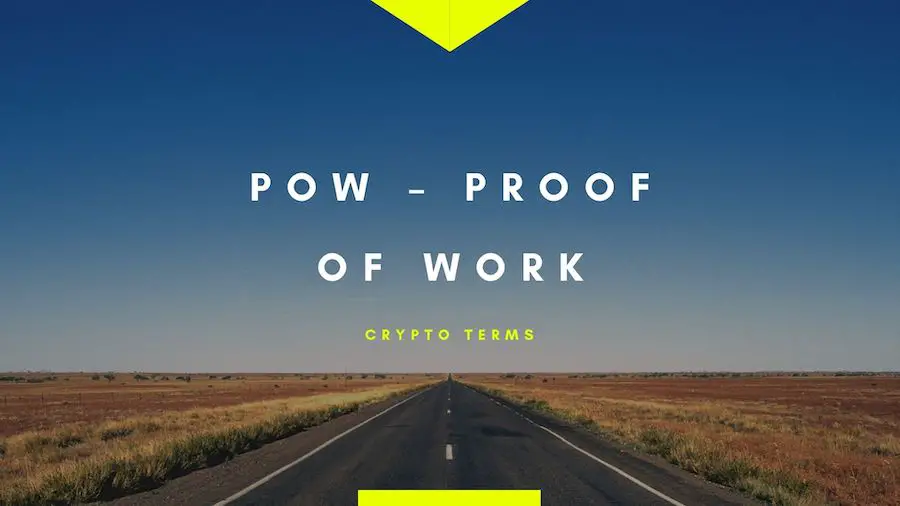Сryptocurrency is confidently spreading around the world. New resources devoted to digital money regularly appear on the network. And often, when a beginner enters a crypto forum, he comes across a lot of unfamiliar words and expressions.
Usually, there are slang terms, and it is not so easy to guess their meaning. To understand all the intricacies of these words, you need to know their interpretation.
Table of Contents
Cryptocurrency Terms
We have put together a list of the most commonly used abbreviations and terms to facilitate your acquaintance with the crypto world.
1. HODL – Hold on for Dear Life
HODL is one of the most often used terms in the crypto community, which means the storage of the cryptocurrency with anticipation of its further rise in price. There are two versions of its origin.
Some people associate it with the phrase “Hold on for Dear Life“, and others say it was a misspelled word “hold” used on a crypto forum in 2013. In the crypto world, it is entirely up to you what coin you will HODL.
2. DEX – decentralized exchange
It means the absence of a primary controlling node or server. All nodes form a distributed network that eliminates the need for intermediaries and enables trading through smart contracts.
It means that a user does not give up control of his funds during transactions. Thus, DEXs have enhanced privacy and better asset control.
3. DeFi – decentralized finance
It is an ecosystem of decentralized financial services on public blockchains. It is an alternative to the traditional financial system without intermediaries and government control.
Though DeFi utilizes smart contracts, it still involves elements of the traditional payment systems but without middlemen. The most relevant examples of Defi are decentralized exchanges, stablecoins, lending platforms.
4. DAPP – decentralized application
An application runs without a backend on a decentralized computer system, for example, on a blockchain or P2P network of computers. It means that the app code is accessible to all network participants.
Thus, dApp is a new open-source software model that is reliable and transparent.
5. CMC – Coinmarketcap
CMC is the most significant price tracking analytical resource that provides the latest details on all crypto assets. The information on this resource is timely and unbiased and is cited by the world’s media companies.

Since 2020 it belongs to Binance, the biggest crypto exchange. But Coinmarketcap still operates independently from its parent company.
6. ERC-20 – Ethereum Request for Comment
ERC-20 token is a cryptocurrency created on the Ethereum platform. The abbreviation stands for Ethereum Request for Comment, and 20 represents proposal ID.
These tokens are stored and sent using Ethereum addresses and use gas to pay for transactions. ERC-20 cannot be called software or a code. It is a protocol that governs tokenization and monitors that technical requirements are fully met.
7. Addy – a public key (address)
It is the abbreviated name of the public key (address) from the cryptocurrency wallet. It would help if you told your addy to receive a transaction.
Even if this term is not widely used in everyday life, it is one of the most common words in the crypto space.
8. Node – computer connected to a blockchain network
Any computer connected to a blockchain network is a node. The nodes of the decentralized network communicate via P2P protocols to exchange information about blocks and transactions.
A P3P protocol is a cross-platform runtime that allows nodes to communicate. A node can store only part or all of the blockchain data. In simple words, a node is a communication point in the system.
9. MM – Market maker
MM is a market participant that creates orders. The market maker is an everyday player in financial markets. It creates a new trade request, increases the exchange turnover, and raises the liquidity of the crypto asset.
The central role of market-making institutions on the cryptocurrency market to reduce the probability of price manipulations.
10. FOMO – Fear of Missing Out
FOMO can be read as Fear of Missing Out – the emotion that investors feel when they rush to buy an asset, fearing that they will miss the opportunity to make a profit.

This term conveys the manipulations with crypto assets made on impulse and can lead to losses.
11. FUD – Fear, uncertainty, and doubt
This word stands for the phrase “Fear, uncertainty, and doubt”. It means spreading fear and misinformation to gain an advantage.
Many rumors and news are often not grounded in real life, but they may make much noise. Such spreads in the media are referred to as FUD.
12. REKT – failure, loss of money
This term is a shortened variant of “wrecked.” It probably comes from the gaming industry when used to show that the gamer is destroyed. It means a failure, loss of money due to a very unsuccessful deal, or a sudden drop in cryptocurrency value.
13. DYOR means Do Your Own Research
It is perhaps the most precious piece of advice in the cryptocurrency space. DYOR assumes that financial decisions should only be made after traders have correctly studied the market themselves.
This term is not just crypto slang; it is a general warning to recheck all the info given plenty of misinformation being spread on the Internet today.
14. Shitcoin – “shit” and “coin”
The crypto community made this word by merging “shit” and “coin.” It is derogatory jargon, meaning a cryptocurrency with no immediate, visible potential and has a meager cost. In other words, this term is a warning that this or that coin is a terrible investment and should be avoided.
15. Token/coin supply
It limits the total number of coins that will ever exist for a particular crypto protocol. Though, you can meet the terms “initial token supply,” “current token supply,” “total token supply.”
They mean a certain amount of tokens – issued at the start, in current circulations, or a limit for all possible tokens.
16. Coin burn
It is a process of the deliberate destruction of a specific cryptocurrency amount. During this process, part of the tokens or coins is removed from circulation forever.
Most often, it is done to increase the value of an asset. But coins can be burned both within the ICO and to create a new cryptocurrency.
17. BTC – Bitcoin
Bitcoin is the first and the most known cryptocurrency with a fixed release limit. This cryptocurrency is generated by networks of computers and can be used for online payments.

The limit supply of bitcoins is 21 million. At the beginning of 2021, nearly 19 million bitcoins were already mined.
18. ETH – Ether
It is both a platform and digital currency. Ether is the crypto-fuel of the Ethereum platform for creating decentralized applications based on smart contracts.
Ethereum platform is a technology for payments, applications, and digital money. Unlike Bitcoin, ETH has no limit to coin supply.
19. XRP – Ripple
Ripple is an internal cryptocurrency of an open-source distributed payment system that uses the principle of a trusted intermediary.1 XRP is subdivided into a million units called “drops.”
The entire limited supply of XRP tokens, 100 billion, has been pre-mined. Now, users can participate in scientific research supported by Ripple Labs, performing calculations or performing other actions using computational algorithms, and receive XRP tokens as a reward.
20. PoA – Proof of Authority
PoA is a particular type of consensus algorithms in which confirmation is carried out by network participants previously approved by the developers – validators.
It helps select trustworthy blockchain participants who are then tasked with creating new blocks. The choice depends on the participant’s reputation.
21. PoB – Proof of Burn
This algorithm consists of the need to burn cryptocurrency tokens to obtain the right to mine them. Miners need to send cryptocurrency to a verifiable public address from which they can never return it.
Naturally, the process of burning coins reduces market accessibility and creates a scarcity of coins, which leads to a potential increase in their value. Besides, burning coins is another way to invest in network security.
22. PoD – Proof of Developer
It is an algorithm that has evidence of a real, living software developer who created cryptocurrency. Its main task is to prevent an anonymous developer from running away with the funds raised without providing a working model.
23. PoS – Proof of Stake
This algorithm aims to check the correctness of the transaction by taking into account the final share of funds that are located on the user’s wallet.
This consensus allows mining in proportion to the number of coins you own. So, for example, a miner who owns 3% of the available bitcoins can theoretically only verify 3% of the blocks.
24. PoW – Proof of Work
This is an algorithm used by the Bitcoin mining network to reach a consensus, determining which of the mining nodes will write the formed block to the blockchain.

With Proof of Work, miners communicate with each other to complete transactions on the network and for rewards.
25. SC – Smart Contract
It is a mechanism that includes digital assets and two or more parties that invest assets in a contract. Later these assets are automatically distributed between the parties, according to an unknown formula when signing the contract.
A smart contract is a fundamental element of any distributed application (DApp) that operates in an environment without centralized authority, such as a website administrator or government.
26. ERC – Ethereum Request for Comments
It is the official protocol used to introduce proposals to facilitate the modernization of Ethereum. This abbreviation stands for Ethereum Request for Comments.
Before the invention of the ERC-20 standard, there were many compatibility issues between the various forms of Ethereum tokens.
Each token had a single, smart contract. ERC-20 solution became a standard protocol for all the further tokens.
27. SegWit – Segregated Witness
It is a soft fork offered by the Bitcoin Core development team that aims to optimize the block size. This technology immediately allowed to significantly change the bandwidth of the classic blockchain without the need for a major transformation of its source code.
Thanks to this, the security and the number of transactions processed by the network per unit of time have increased significantly. Still, the principle of operation of bitcoin as a whole has remained the same.
28. WP – whitepaper
It is a comprehensive technical description of the concept and protocol of the cryptocurrency. The White Paper of cryptocurrency is considered one of the essential documents for an investor.
Experts use it to assess the level of profit and risks, after which they make decisions on the acquisition of crypto coins.
29. ICO – the Initial Coin Offering
ICO is one way to attract investment in the world of cryptocurrencies. It reminds crowdfunding and allows accelerating the growth of the project and monetizing the idea in the future.

In simple words, a company that raises money for its project through ICO borrows from the blockchain community.
30. IBO – The Initial Bounty Offering
IBO is a quick process to make a new cryptocurrency publicly available and distribute it between people who invest their skills and time to earn rewards in the new cryptocurrency.
Unlike the original coin offering, where coins are sold, IBO requires more mental commitment. A distinctive feature of IBO is that each participant can follow the process of project implementation.
31. IEO – The Initial Exchange Offering
It is a relatively new concept in which companies can directly sell their tokens to individual members or traders. In this process, coins are exchanged without intermediaries. In this process, the cryptocurrency exchange serves as a counterparty that facilitates and controls the fundraising process.
A token sale is carried out directly through the trading platform and not intelligent contracts. For these purposes, the exchange is launching a unique crowd sale platform.
32. IDO – The Initial DEX Offering
IDO is the newest concept of fundraising in the cryptocurrency industry. However, unlike ICOs, CEOs, and STOs, the initial DEX offering is carried out on decentralized exchanges.
Projects financed by IDO are forced to fulfill their obligations since, in case of non-fulfillment of tasks and visible progress, investors have the right to reassign their assets to other validators and projects.
33. IFO – Initial Futures Offering
IFO is a new process that implies buying tokens that do not even exist at the time of purchase. These are financial contracts that oblige parties to trade an asset with a fixed future date and price.
34. KYC – Know Your Client
The abbreviation stands for Know Your Client and means certain customer verification rules used by banks, exchanges, and other companies that deal with private transactions.
The primary KYC purpose is to minimize money laundering. ID verification is mandatory on many sites to prevent the illegal use of Bitcoin and decrease tax fraud.
35. AMA – Ask Me Anything
It is an abbreviation of “Ask Me Anything.” The crypto community is a commonly used method to answer users’ questions in a live stream or via blog posts.

Many influencers regularly hold AMA events to talk about upcoming ICO and discuss the prospects of coins. It is done to attract more investors to the coin.
36. FCFS – first come, first served
An operating system scheduling algorithm automatically executes queued requests and processes in the order they are received.
This model is used in ICO, which sells a fixed number of coins at a fixed price. The only drawback is that the first few users may purchase all the coins leaving the rest with nothing.
37. TGE – token generation event
This term is used to mark the time a certain token was issued. This could have happened via preliminary sale, an ICO, or mining.
TGE term is used mainly when a company creates a token on the Ethereum blockchain. Such tokens are minor, and it is not correct to call the event an ICO. These tokens are not considered securities for taxing.
38. ATH – all-time high
This term is used to show the highest recorded price of an asset. When cryptocurrency reaches ATH, it is often accompanied by a sharp increase in trading volume as its holders are interested in taking quick profits.
39. ATL – all-time low
ATL is an opposite term of ATH, used to show the lowest price of an asset ever recorded. For example, Bitcoin ATL is unknown because it was worth nothing at the time of launch.
But you can trace it for later periods on all statistical sites.
40. TPS – Transactions Per Second
It is the number of transactions that the blockchain network can process every second. This term is quite popular in the crypto space, especially when it comes to scalability.
To calculate TPS, you need to know the time between blocks, the average transaction size, and the block size. The time between blocks is the average time it takes to create a new block in the chain.
41. TxID – Transaction Identification
It is a form of the transaction key, i.e., when you transfer a coin from one wallet to another, you will be issued a hash code or TxID to check the input and output of this transaction.
TxID is a 64-character code made up of a specific sequence of letters and numbers. This code is generated individually for each transaction and contains information about it.
Conclusion
This list is far from being complete. There are many other expressions and abbreviations in the cryptocurrency world, but the above are often used. These slang terms can very relevantly convey the meaning of a longer phrase in a single short word. If you want to become a crypto expert, use this article as a starting point to build your crypto glossary.



